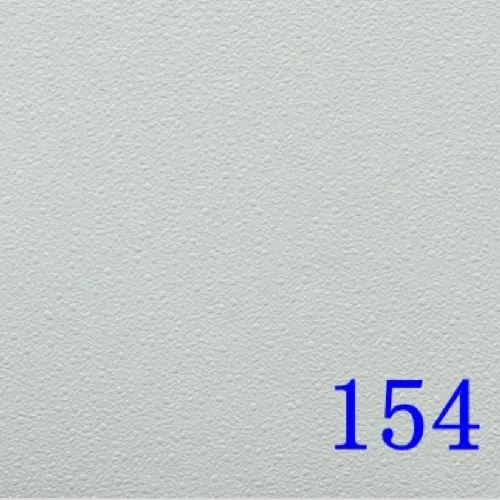9 月 . 28, 2024 14:51 Back to list
Ceiling Grid Tie Wire Installation Guide and Best Practices for Professionals
Understanding Ceiling Grid Tie Wire An Essential Component for Suspended Ceilings
The realm of interior design and building construction is filled with intricate materials and tools that play crucial roles in the overall structural integrity and aesthetic appeal of a space. One such essential component is the ceiling grid tie wire. Often overlooked, this simple yet vital element is fundamental for ensuring the stability and reliability of suspended ceiling systems.
What is Ceiling Grid Tie Wire?
Ceiling grid tie wire is a type of wire used predominantly in the installation and support of suspended ceilings. Suspended ceilings, also known as drop ceilings, are comprised of ceiling tiles that are hung below the main overhead structure. This is commonly used to conceal electrical wiring, pipes, and ductwork, creating a cleaner and more organized appearance in commercial and residential spaces. The tie wire plays a crucial role in maintaining the structural integrity of the ceiling grid by providing support and anchoring connections.
Purpose and Functionality
The primary function of ceiling grid tie wire is to secure the ceiling grid system to the building's structural elements, such as beams and joists. It reinforces the stability of the grid, preventing it from sagging or shifting over time. By tying together various components of the ceiling grid, the wire helps maintain alignment and ensures that each tile fits snugly into place.
Furthermore, the tie wire acts as a safety measure. In case of any unforeseen stresses or loads placed on the ceiling tiles, the tie wire provides additional support. This is especially vital in commercial settings where lighting fixtures, HVAC components, or other items may be suspended from the ceiling grid. Without adequate reinforcement from tie wires, the risk of structural failure increases, potentially leading to costly repairs and safety hazards.
Installation Process
Installing ceiling grid tie wire is a straightforward process that generally takes place during the initial installation of the suspended ceiling system. Here are the basic steps involved
1. Preparation Begin by laying out the ceiling grid according to the design plan. Ensure that all components, including main tees, cross tees, and wall angles, are ready for installation.
ceiling grid tie wire

2. Securing the Main Grid Attach the main tees to the building's structure using appropriate fasteners, ensuring they are level and properly aligned.
3. Inserting Tie Wire Cut the tie wire to the necessary lengths. Create loops in the wire and secure them to the main tees and adjacent structural elements, such as joists or beams. It’s essential to follow proper industry standards for spacing and tension to ensure maximum effectiveness.
4. Attach Cross Tees After the tie wires are in place, attach the cross tees to form the grid pattern. Make sure the grid is square and evenly spaced to accommodate the ceiling tiles.
5. Final Checks Inspect the installation for any loose connections or misalignments. Adjust as necessary before placing the ceiling tiles into the grid.
Selecting the Right Tie Wire
Choosing the right type of tie wire is critical for a successful installation. Typically, the wire is made from galvanized steel, which enhances its durability and resistance to corrosion. It's available in various gauges; the thicker the wire, the more weight it can support. When selecting tie wire, it’s important to consider the specific requirements of the ceiling system and any additional loads that may be supported from the grid.
Conclusion
Ceiling grid tie wire may seem like a minor component in the grand scheme of interior construction, but its significance cannot be overstated. It provides essential support for suspended ceilings, ensuring that they remain secure and visually appealing. By understanding its purpose and installation process, builders and designers can create safe, lasting, and aesthetically pleasing ceiling systems. In addition, by using quality materials and adhering to best practices, one can ensure the long-term performance of the ceiling grid, contributing to the overall longevity of the building itself.
In summation, the use of ceiling grid tie wire is paramount in the realm of suspended ceiling installations. It serves both structural and safety purposes that protect the integrity of the ceiling, making it a crucial element in modern construction practices. Embracing the importance of such components will lead to better quality construction and ultimately, more resilient buildings.
-
Revolutionizing Interior Design with Ceilings t grid Suspended SystemNewsOct.29,2024
-
Revolutionizing Ceiling Design with ceiling access panel with Gypsum Tile WaterproofNewsOct.29,2024
-
Revolutionizing Interior Design with PVC Gypsum Ceiling: A Comprehensive GuideNewsOct.29,2024
-
Elevating Interior Design with High quality Mineral Fiber Ceiling TilesNewsOct.29,2024
-
Revolutionizing Interior Design with PVC Gypsum Ceiling: A Comprehensive GuideNewsOct.29,2024
-
Elevating Interior Design with High-Quality Mineral Fiber Ceiling Tiles: A Comprehensive GuideNewsOct.29,2024







